Top 14 Most Greedy Animals In The World (With Pictures)
In the fascinating world of wildlife, there exists a curious phenomenon that both captivates and perplexes us – the display of greed among animals. From cunning squirrels hoarding nuts to opportunistic seagulls stealing food from unsuspecting beachgoers, the concept of greed transcends human behavior and manifests itself in surprising ways across various species. What drives these creatures to prioritize their own desires over communal welfare?
Are they simply instinct-driven beings or do they possess a sense of calculated selfishness? Join us on an exploration into the realm of greedy animals in the world, where we uncover the intriguing stories behind their insatiable appetites and delve into the complexities of survival instincts clashing with moral boundaries.
Most Greedy Animals In The World
Here is the list of greediest animals in the world:
| Number Of Animals | List Of Greedy Animal |
| #1 | Squirrels |
| #2 | Pigeons |
| #3 | Hamsters |
| #4 | Pigs |
| #5 | Hyenas |
| #6 | Gorillas |
| #7 | Foxes |
| #8 | Tiger Sharks |
| #9 | Tasmanian Devils |
| #10 | Puffins |
| #11 | American Pygmy Shrews |
| #12 | Seagulls |
| #13 | Raccoons |
| #14 | Honey Badgers |
Squirrels
Scientific Name: Sciuridae
Class: Mammalia
Diet: Omnivore
These seemingly innocent creatures have a reputation for being remarkably greedy when it comes to food. Squirrels are known for hoarding and storing away their food in various hiding spots, displaying a possessiveness that is unmatched in the animal kingdom. Their insatiable appetite drives them to constantly search for more, often raiding bird feeders and scavenging from gardens with no regard for boundaries.
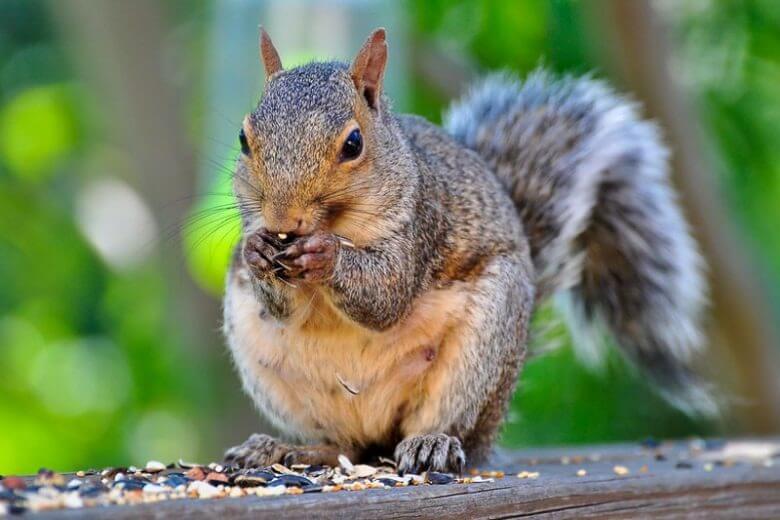
Despite their greediness, squirrels play an essential role in ecosystem balance by aiding in seed dispersal through their hoarding behavior. Their actions contribute to the growth of new plants and trees, enhancing biodiversity in the environment. Watching these agile creatures scamper about with acorns or nuts clenched tightly in their paws showcases their determination and resourcefulness, painting a portrait of survival instincts at its finest.
Pigeons
Scientific Name: Columbidae
Class: Aves
Diet: Omnivore
Why do pigeons have a bad reputation for being greedy animals? It’s not simply because they are always on the lookout for food, but rather their strategic and collaborative approach to obtaining it. Pigeons are known to flock together in large numbers, coordinating their movements to maximize their chances of finding and consuming food quickly. This behavior is a survival tactic that has been honed through generations of evolution, allowing pigeons to thrive even in urban environments where resources can be scarce.
Pigeons exhibit remarkable adaptability when it comes to scavenging for food. They have been observed using their sharp eyesight and agile flying abilities to spot and seize opportunities for quick meals. This resourcefulness demonstrates a level of intelligence and cunning that is often underestimated in these seemingly common city birds. So next time you see a group of pigeons gathering around a discarded piece of bread or crumbs, remember that their so-called greediness is actually an impressive display of instinctual behavior finely tuned by nature.
Hamsters
Scientific Name: Cricetinae
Class: Mammalia
Diet: Omnivore
Hamsters are notorious for their hoarding behavior, often displaying greedy tendencies when it comes to storing food in their cheeks. This innate instinct stems from their wild ancestors’ need to gather and store resources for survival during times of scarcity. Despite being domesticated pets, hamsters have retained this greedy trait as a way to ensure they have enough sustenance at all times.
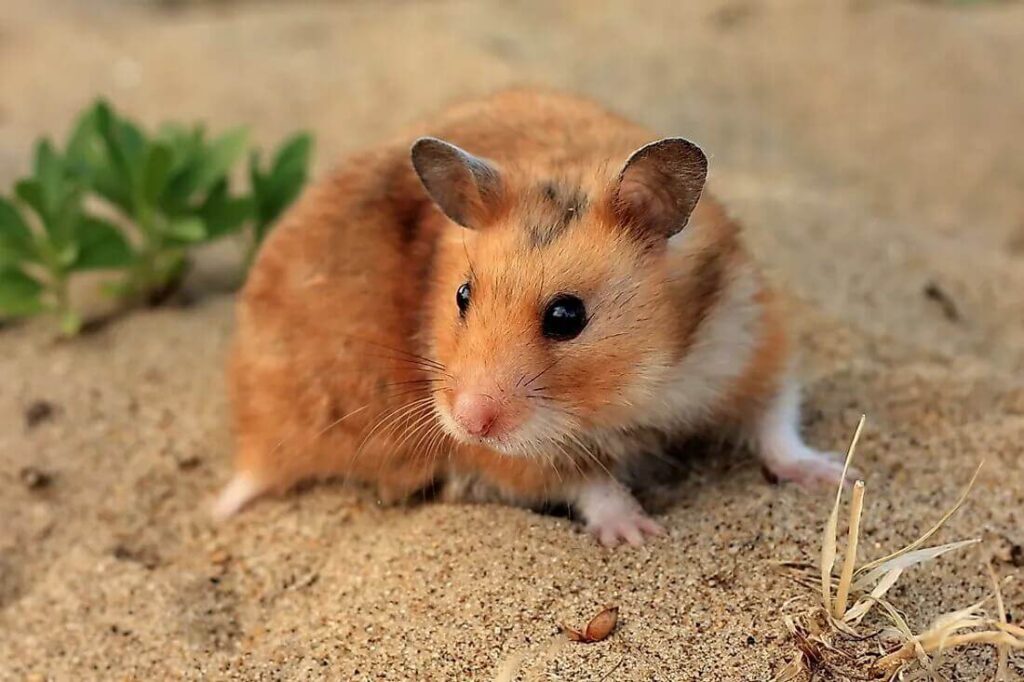
The sight of a hamster frantically stuffing its cheeks with food can be both adorable and fascinating. It serves as a reminder of the remarkable adaptability and resourcefulness these tiny creatures possess. While some may see this behavior as mere greed, it is essential to understand that it is an evolutionary trait deeply ingrained in their DNA. Hamsters’ hoarding habits also highlight their intelligence and strategic planning skills, demonstrating how they prioritize securing their own well-being in a competitive world.
Pigs
Scientific Name: Sus scrofa domesticus
Class: Mammalia
Diet: Omnivore
Pigs, often thought of as greedy animals, have garnered a negative reputation due to their voracious appetites. However, this label fails to capture the complex and intelligent nature of these creatures. Pigs are actually highly social animals that form strong bonds with other members of their group. They exhibit empathy towards one another and display signs of emotional intelligence.
Pigs are incredibly resourceful creatures with impressive problem-solving skills. In the wild, they use their snouts to forage for food, demonstrating adaptability and ingenuity in finding sustenance. This behavior showcases the innate intelligence of pigs and challenges the stereotype of them being solely driven by greed. The next time you encounter a pig, take a moment to appreciate their cognitive abilities and social dynamics beyond the simplistic depiction of greed often associated with them.
Hyenas
Scientific Name: Hyaenidae
Class: Mammalia
Diet: Carnivore
Hyenas are often painted as villains in popular culture, characterized by their cunning and greed. These misunderstood creatures play a vital role in their ecosystems as scavengers, cleaning up carcasses and helping to prevent the spread of disease. Hyenas possess powerful jaws that allow them to break through bones and tough hide, showcasing their remarkable adaptability.
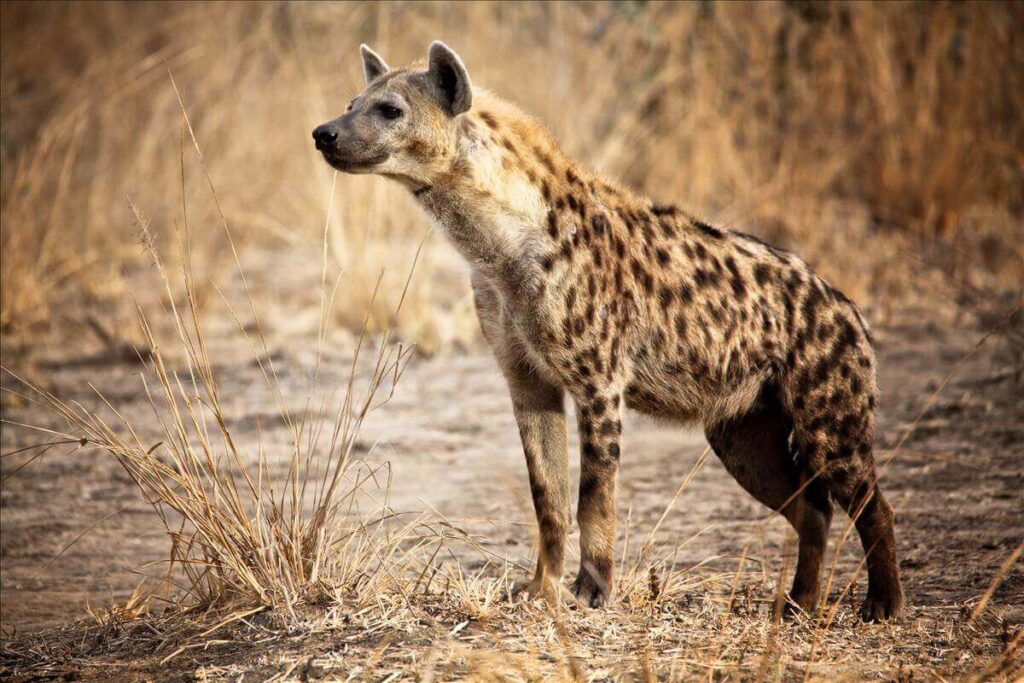
Despite their reputation for being greedy, hyenas are actually highly efficient hunters. They work together in coordinated packs to take down larger prey, displaying complex social structures and communication skills. This cooperative behavior allows them to secure food resources more effectively, challenging our preconceived notions about their motives.
Gorillas
Scientific Name: Gorilla
Class: Mammalia
Diet: Herbivore
Gorillas are commonly known for their gentle nature and calm demeanor, but what many may not realize is that these majestic creatures can also exhibit signs of greed. In the wild, gorillas have been observed hoarding food resources and aggressively defending them from other members of their group. This behavior stems from a primal instinct to ensure survival and dominance within the social hierarchy.
Interestingly, studies have shown that dominant male gorillas will often consume more food than they need, in order to maintain their leadership position among the group. This type of greedy behavior can lead to conflicts within the gorilla community, as subordinate members may be deprived of essential nutrition. While it may seem counterintuitive for such intelligent animals to act in a self-serving manner, it serves as a reminder that even in the animal kingdom, greed is a powerful motivator with consequences that extend beyond individual gain.
Foxes
Scientific Name: Vulpes
Class: Mammalia
Diet: Omnivore
Foxes are known for their clever and cunning nature, but their reputation for being greedy is often overlooked. These crafty animals have been observed hoarding food in caches to ensure they have a steady supply during lean times, showcasing their penchant for greediness. In some cases, foxes have been known to steal food from other animals or even humans, showing a resourcefulness that borders on greed.

Despite their selfish tendencies, foxes also exhibit moments of generosity within their own social structures. While they may be greedy when it comes to food acquisition, they are known to share resources with their offspring and mates in order to ensure the survival of the group as a whole. This paradoxical behavior adds an intriguing layer to the complex nature of foxes and challenges conventional notions of greed in the animal kingdom.
Tiger Sharks
Scientific Name: Galeocerdo cuvier
Class: Fish
Diet: Carnivore
Tiger sharks are notorious for their voracious appetite and willingness to consume almost anything in their path. These apex predators have a reputation for being greedy eaters, known to devour anything from fish and sea turtles to even tin cans and tires. Their insatiable hunger drives them to scavenge for food relentlessly, making them formidable hunters in the ocean.
One interesting aspect of tiger shark behavior is their opportunistic feeding habits. They have been observed feasting on carrion or garbage floating in the water, showcasing their adaptability to various food sources. This scavenger-like behavior sets them apart from other shark species and highlights their ability to survive in diverse marine environments. Despite their reputation as greedy animals, tiger sharks play a crucial role in maintaining the delicate balance of marine ecosystems through their consumption patterns.
Tasmanian Devils
Scientific Name: Sarcophilus harrisii
Class: Mammalia
Diet: Carnivore
The Tasmanian Devil, with its voracious appetite and sharp teeth, has long been associated with greed in the animal kingdom. These carnivorous marsupials are known for their aggressive feeding behavior and powerful jaws capable of crushing bones. Despite their small size, Tasmanian Devils can consume up to 40% of their body weight in a single meal, exhibiting an insatiable hunger that earns them the title of greedy animals.
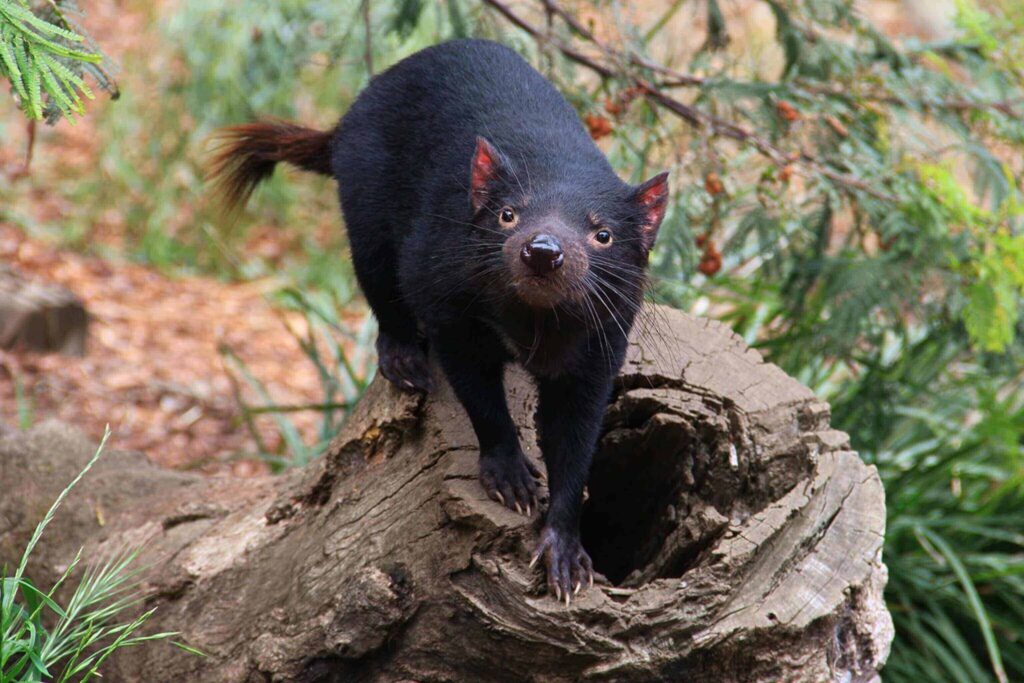
What sets Tasmanian Devils apart from other scavengers is their competitive nature when it comes to food resources. They often engage in fierce battles over carcasses, using their loud screeches and ferocious growls to intimidate rivals and claim the best pieces for themselves. This ruthless approach to securing sustenance highlights the survival instincts ingrained in these unique creatures, showcasing a different side to their greedy reputation.
Puffins
Scientific Name: Fratercula
Class: Aves
Diet: Carnivore
Puffins may appear cute and innocent with their colorful beaks and waddling walk, but don’t let their charming appearance fool you – these birds are notorious for their greedy eating habits. Puffins have a voracious appetite, consuming a diet primarily consisting of fish such as herring, capelin, and sand eels. Their insatiable hunger drives them to catch multiple fish at once in their specialized beaks, often overloading themselves in the process.
Puffins are capable of storing large amounts of fish in their bills to bring back to their burrows or feed to their chicks. This behavior allows them to sustain themselves during long periods at sea without needing to hunt frequently. Despite being efficient hunters, puffins have been known to steal fish from each other through cunning tactics, displaying their competitive nature when it comes to food resources.
American Pygmy Shrews
Scientific Name: Sorex hoyi Baird
Class: Mammalia
Diet: Insectivore
American Pygmy Shrews are known for their insatiable appetites, consuming up to double their body weight in food every day. Despite their tiny size, these greedy little creatures have a big impact on their environment as voracious predators of insects and small invertebrates. Their hyperactive metabolism drives them to constantly seek out food, leading to a perpetual cycle of eating and hunting.

Their greediness is both a survival strategy and an evolutionary adaptation that has allowed them to thrive in various habitats across North America. This relentless pursuit of sustenance makes them formidable hunters, using their keen senses to track down prey with astonishing precision. While they may be small in stature, American Pygmy Shrews certainly make up for it with their immense appetites and impressive hunting skills.
Seagulls
Scientific Name: Larinae
Class: Aves
Diet: Omnivores
Seagulls have earned a reputation for being highly opportunistic and greedy creatures when it comes to food. These marine birds are known for their bold scavenging behavior, especially in coastal areas where they swoop down on unsuspecting beachgoers to snatch away their snacks. With a keen eye and swift movements, seagulls have mastered the art of stealing food from humans as well as other animals in their vicinity.
One interesting aspect of seagull behavior is their ability to work together in groups to increase their chances of securing a meal. By forming large flocks, these birds can overwhelm larger predators or outcompete other seabirds during feeding frenzies. Their clever tactics and adaptability make seagulls formidable opponents in the quest for food, showing that greediness can sometimes be an advantageous survival strategy in the animal kingdom.
Raccoons
Scientific Name: Procyon lotor
Class: Mammalia
Diet: Omnivores
Raccoons are notorious for their greedy behavior, often raiding trash cans and stealing food from unsuspecting homeowners. Their agile paws and sharp claws make them adept thieves, able to open containers and break into secure areas easily. Despite their cute appearance, raccoons are opportunistic feeders, always on the lookout for their next meal.
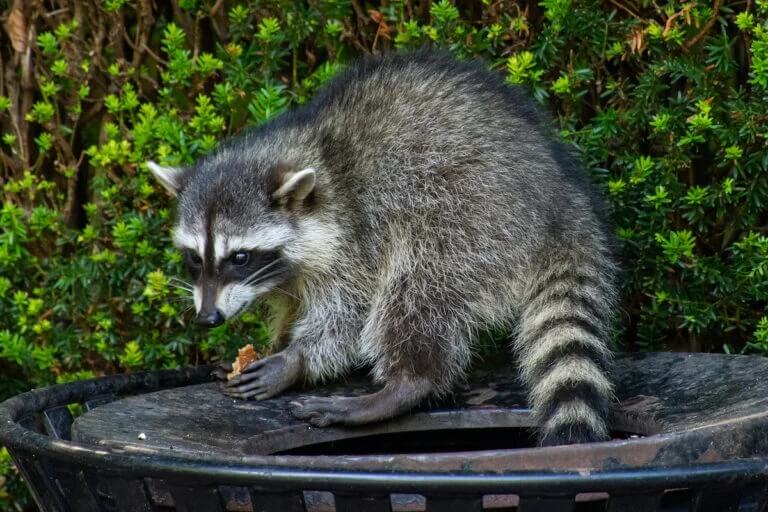
These masked bandits have a voracious appetite and will eat almost anything they can get their hands on, including fruits, vegetables, insects, small animals, and even pet food left outdoors. Raccoons’ relentless search for food has led them to adapt well to urban environments where they can easily scavenge for leftovers. While their actions may seem greedy to humans trying to protect their property, raccoons are simply following their instinctual drive to survive in the wild by seeking out sources of sustenance wherever they can find them.
Honey Badgers
Scientific Name: Mellivora capensis
Class: Mammalia
Diet: Omnivores
Honey badgers are renowned for their relentless pursuit of food, often displayed in their fearless and audacious hunting techniques. These animals possess a strong sense of smell which aids them in tracking down their next meal, making them particularly efficient at finding hidden sources of food. Despite their small size, honey badgers are known to take on much larger prey with astonishing ferocity, demonstrating an insatiable hunger that drives them to push their limits.
Their greed is not limited to food alone; honey badgers have also been observed stealing food from other predators or scavenging leftovers without fear of confrontation. This bold behavior showcases the opportunistic nature of these creatures, always looking for ways to satisfy their voracious appetites. In the wild, honey badgers truly embody the notion of survival of the fittest as they stop at nothing to secure their next meal, proving that sometimes being greedy can be a key factor for success in the animal kingdom.
Readmore: Explore Animals That Are Humble.
Conclusion
The behavior of greedy animals in the world reflects a natural instinct for survival and competition. While this behavior may seem selfish or excessive to humans, it is essential for the balance of ecosystems and biodiversity. Understanding the role of greed in animal behavior can provide valuable insights into their evolutionary strategies and interactions with other species.
By studying these behaviors, we can gain a deeper appreciation for the complexities of wildlife and learn to coexist with them more harmoniously. Let us continue to observe and protect these animals in their natural habitats, ensuring their survival for future generations.
FAQs
What Is The Most Greedy Animal?
The most greedy animal in the natural world is often considered to be the raccoon. Known for their insatiable appetite and opportunistic behavior, raccoons are notorious for raiding trash cans, gardens, and even breaking into homes in search of food. Their ability to eat almost anything and their tendency to hoard food make them one of the greediest animals in the wild.
What Is The Hungriest Animal In The World?
The animal often considered the hungriest in the world is the blue whale. As the largest animal on Earth, a blue whale can consume up to 4 tons of krill per day to sustain its massive size and energy requirements. These gentle giants have an insatiable appetite due to their immense size and need for constant feeding to maintain their body weight.
What Animal Represents Selfishness?
An animal that can represent selfishness is the hyena. Hyenas are known for their scavenging behavior and aggressive nature when it comes to obtaining food. They are opportunistic hunters who will not hesitate to steal from others or resort to bullying tactics to satisfy their own needs. This behavior has led them to be viewed as symbols of greed and selfishness in various cultures and literature.
- Discover Top 9 White Birds in Florida (With Pictures) - November 7, 2024
- Discover Top 16 Black Birds In South Carolina (With Pictures) - November 6, 2024
- Explore Top 18 Most Famous Yellow Birds in Arizona (With Pictures) - November 5, 2024







